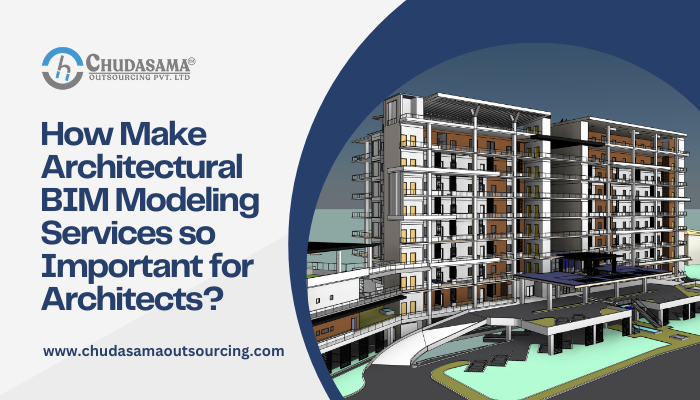Architectural Modeling actually plays a vital role in how architects bring concepts to reality. The process of designing an architectural structure has changed over time.
The utilization of knowledge and data-rich modeling, such as those produced in Architectural BIM Modeling Services, to convey design purpose, evaluate cost and performance aspects, and integrate design modifications in the early phases of the design process, has become an unavoidable need.
The manner you model, cooperate, interact, and execute projects may have transformed as a result of industry needs, but the creation of innovative software, like Building Information Modeling tools, not only improves the design development process through the use of 3D BIM Modeling and Outsourcing BIM Services but also assist address actual-world design issues.
An architectural model is a physical, three-dimensional depiction of a building that is made to investigate different parts of a design or to convey design concepts to clients since it provides a nearly accurate image of the proposed construction.
Architectural Modeling Services is one of the main services offered to a customer that includes architects, builders, general contractors, owners, and stakeholders. BIM Modeling Services is used in different types of projects including commercial, residential, and hospitality projects.
Different types of Architectural Models
No matter the model type you select to best match your project, the benefits of using Architectural 3D Modeling remain constant. Although this, it is crucial to consider three common model types that you must work with and assess in order to determine whether deploying certain model types will fully satisfy the objectives of your project.
-
Physical Model:
A scaled-down sample of the building project is constructed for visualization in a physical model, which is the pinnacle of the most traditional modeling technique for architectural purposes.
The goal is to develop a computer-generated representation of the project that captures all of its intricate details at scales that are comparable to the entire structure that is being built. This will enable you to schedule each step more intelligently and weigh the viability of every choice you make after that.
-
Computerized Visualization:
Computerized visualization has become a viable alternative to labor-intensive physical models in terms of cost. Digital options have benefited businesses that are smaller in scope and clientele with tighter budgets the most. Physical models have quickly and steadily made way for digitally created equivalents in recent years.
The model created using specialist computer software includes its own material set that may be adjusted as needed to examine the project’s sustainability. Additionally, you can follow the project’s development and quickly fine-tune the model using the learnings from the early phases of creation.
Modern CAD software allows any project to be accurately depicted on a 3D digital site, which is extremely helpful for architects and engineers of the project. Smart camera postures, background and atmospheric elements, and even the prevailing physical circumstances may all be taken into consideration when employing the 3D rendering procedure to lend depth to the 3D model.
You may quickly obtain a thorough 360-degree view of the planned project, which you can utilize to assist engineers and give customers incisive presentations.
-
Intervention using Virtual Reality:
Both the physical model and its digital counterpart provide architects with a number of benefits, but they also have their drawbacks. Physical models require a significant amount of money and time to build, therefore you should avoid doing this.
Digital models created using 3D software frequently fall short of conveying a feeling of size and could not give the engineer the proper architectural perspective like a real model. Virtual reality is being hailed as a crucial advancement in the architectural 3D modeling field as a means of overcoming such obstacles.
Benefits of Architectural 3D Modeling
Architectural Modeling has various advantages, from improving design accuracy to optimizing processes, including:
-
Better Construction Design Visualization:
Architectural 3D modeling enables the realistic representation of the to-be-constructed structure by producing exact, as-built 3D virtual models, far more efficiently than flat 2D designs ever would manage. With precise accuracy, 3D modeling can show even the smallest elements, such as roofs, standard openings, plumbing fittings, and external building elevations.
-
Quick Error and Inconsistency Detection:
Small mistakes frequently go overlooked while planning a building on paper. But later on, these errors need expensive reworks. This interferes with work and production and raises building costs.
Precisely simulating your concept in a 3D Model using 3D software enables you to identify all errors early on – right at the planning stage – so that you may not only construct your project to precision but also help save your precious money and time.
-
Better Design:
An accurate representation of the complete construction project is provided through 3D modeling. The architects may test and assess many design possibilities by generating a virtual model, and then choose the solution that best satisfies the building’s needs.
-
Better Team Collaboration:
Better team collaboration is required at many levels when working on a building project. Everything is simpler with 3D modeling. It facilitates effective communication amongst several teams by maintaining centralized control over the building data. They are able to monitor even the smallest changes and offer their vital opinion in real time thanks to it.
Conclusion
These days, Architecture BIM Services is a requirement of architects. It, together with its other innovations, is indispensable in assisting architecture engineers to precisely envision their design elements, reduce risks, and confidently build their constructions. So Architectural 3D Modeling is the method to go if you desire to improve the accuracy, productivity, and effectiveness of your architectural procedures.
Outsourcing BIM Services can assist you in overcoming the learning curve rapidly. Outsourcing firms offer top-notch architectural design services to assist you to remain ahead of your rivals, from offering you professional CAD consultancy to creating architectural BIM models for your architectural design.
outsourcing your construction project you will get lots of benefits like high-quality and accurate models, better team collaboration, saving time and money, and many more. You will get access to top professionals who work on your project.



